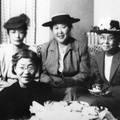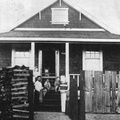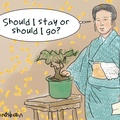The neighbourhood now known as Marpole is in southern Vancouver, on the unceded territory of the Coast Salish peoples. The place known as the Marpole Midden is a site of Musqueam ancestors and now acknowledged as a National Historic Site.
The pre-War Japanese Canadian community in the Marpole neighbourhood of southern Vancouver is not as well known as Powell Street or Steveston. Yet it was home to almost sixty families, including those of David Suzuki and Joy Kogawa, before being uprooted during World War II.
During the pandemic winter of 2020-21, I had to the opportunity to work with the Nikkei National Museum to develop a series of podcasts on this neighbourhood, drawing on various sources.
- Records from the Landscapes of Injustice project that revealed some of the material details of what people lost when they were dispossessed in World War II
- Articles from the New Canadian newspaper
- Article by Mas Fukawa on Ebisu Park (Nikkei Images 2010, Vol. 15, No. 2)
- Previously recorded oral histories and videos
- New interviews conducted over Zoom with former residents, descendants, and associates
We divided the podcast into three episodes, Work, Home, and Community.
For this article, I kept the information together with the sources. They all provide separate glimpses into Marpole from their different perspectives, and I hope that together they weave a better sense of what it was like.
* * * * *
Carr Suzuki: “I used to play with the hakujin kids.”
Carr Suzuki was David Suzuki’s father. He was interviewed for an oral history in 1983, which is now in the audio archive at Simon Fraser University.
Carr was born in 1909 when the area was still known as Eburne, after Henry Eburne who first set up a post office in the area. Later he moved across the water and set up another Eburne. In 1916, the name of the first Eburne was changed to Marpole, after Richard Marpole, the CPR General Superintendent of the Pacific Division.
Carr’s father Sentaro was a boat builder. He had boats lined up outside their house. He helped the three other sons with a boatbuilding shop set up on Annacis Island, which later became known as Mareno Boat Works.
His mother Shika, worked as a domestic for a wealthy English family. This seems to have been a common occupation for first generation Japanese Canadian women. The Suzukis also kept chickens and sold them locally. Carr said this was their main source of income.
“First day in school, I couldn’t speak any English, cause amongst Japanese, eh. I could count in Japanese, but I couldn’t count in English. So English was the hardest subject at school. Mathematics come pretty easy.”
Evidently, his language skills improved. He made friends with the white kids, the hakujin.
“I used to play with the hakujin kids. See, Marpole is mostly hakujin. So I’d go, you know, play with the neighbours, so I’d go to Sunday school. Then when the Methodist Church became United Church, that’s when I joined. I was fifteen then. I was confirmed then, so that’s why my name ‘Carr’ is my Christian name. I said to my father, ‘You know.’ — cause they were Buddhist at that time, I said, ‘Gee, you’re going to go to Paradise. We’re going to go to Heaven. When we die, we'll be going to separate places.’ You know, people, they worry. Then so my father started to study Christianity and there was down here on Third Avenue, there was a Japanese Anglican Church.”
Many Japanese gardeners lived in Marpole. Carr was able to get a job because he could speak English and Japanese. Later, he became manager of the Furuya food store, where he met his wife, Setsu Nakamura. After that, he set up a Dry Cleaners on Selkirk.
David and Marcia were born twins in 1936 At Vancouver General Hospital. Carr’s mother had worked as a domestic for the doctor who delivered them. “David was such a big kid for a twin. He was nine pounds and he was a twin. My wife almost died. Forty-eight hours.”
Miyo Ishiwata: “We weren’t allowed in many places"
Miyo (Ishiwata) Ling’s memories of Marpole come from an oral history recorded in 1985.
She was born in 1919. Just before she was born, four of her older brothers died during the 1918 flu. She had one older brother left, and then he ended up passing away from tuberculosis before they were forced to relocate. “When you hear about it today, it’s almost unheard of, you know, but they had no remedy in those days. It was terrible.”
Her father, Hikotaro Ishiwata worked as gardener for Mr. A. L. Wright, on wealthy properties in Kerrisdale and Shaughnessy. Her mother Umeno worked as a domestic.
Sometimes she got clothes from places she worked and adjusted them. Miyo resented always wearing hand-me-downs but realized this helped them manage.
“We went to a school that was segregated. It’s hard to believe but we went to grade three, children were segregated at David Lloyd George school. It was very embarrassing because we couldn’t understand why, you know, they did this, but it was the principal. He just didn’t like the idea of Orientals, you know, being dispersed with the other children.”
When this segregation took place in 1924, the Japanese Canadian parents were upset. Community leader and missionary Peter Kuwabara and Reverend Kennedy from the local St. Augustine Church, spoke with the school trustees and then the principal. The principal claimed Japanese Canadian children did not understand enough English, which made teaching more difficult and the non-Japanese parents were complaining. Reverend Kennedy offered to set up a kindergarten to prepare Japanese Canadian children for school and this apparently resolved the issue.
“I found the teachers were very understanding, especially in primary years, although when I got into junior high school, we went to Point Grey junior high school, I had a teacher who said to me, ‘Are you sure you wrote that yourself —’ because I was interested in writing, even at that time, and she said, ‘Did you lift this out of a book?’ and I said, ‘No,’ because I guess, maybe she wasn’t to used to Oriental children writing composition.”
Marpole did not have a high school, so students had to go to Magee in Kerrisdale or King Edward, further away on Oak, where the Vancouver General Hospital now stands.
“I went to Magee high school and the first couple years, I just didn’t feel very comfortable. Magee high school is in Kerrisdale, and very affluent society. I just felt like I was a nobody when I went to Magee high school. In Magee, George Reifel was chauffeured to school. He was chauffeured to school and we were nobodies from the other side of the tracks, coming from Marpole. We almost felt like second class citizens, you know, because we weren’t allowed to enter socially many of the places.”
After switching to King Edward school, she felt more supported and did much better.
“We weren’t allowed in many places, like the swimming, public swimming pools were prohibited. Public pools were closed to Orientals, you know. And restaurants. They had signs up that said, ‘Whites only.’ It’s hard to realize that today. But in those days, they wouldn’t allow Orientals to enter certain quarters. Oh yeah, it was terrible.”
Sam Yamamoto: “God, the amount of Japanese I learned was incredible”
Sam Yamamoto was born in 1921. He was about to turn a hundred when he spoke with us. He had been a teenager when his father Toraichi and mother Yasu moved their seven children across the bridge to Marpole from a cannery on Sea Island to avoid an outbreak of tuberculosis. The new home had a full basement with a furnace. They had a main floor and an upper floor with three bedrooms.
Sam fished with his father in the summer, fishing out in the Gulf. His father also ran a fish packer for which he hired a skipper to collect fish caught by other fishermen and transport it to the Imperial cannery in Steveston in the evening.
Rather than change schools, Sam decided to continue at the same one, although it was now much farther away, across two bridges.
“Because of the fact [we only had] one year left, the Principal McNeil gave us permission. A good friend, Donald Ross, had moved also. He wasn’t living in the Cannery but he was my school mate, and he had also moved in on Oak street, several blocks from our way. So, he and I biked together every morning, every afternoon going to Richmond High School to finish off grade twelve.”
Like many nisei, he attended the Japanese school. Rather than commuting for that, he went to the hall on Selkirk, which also houses the Buddhist temple and became an important hub for the community.
“I finished my sixth grade of Japanese on Sea Island. The last couple years, I attended the Japanese language school in Marpole. And fortunately, [we] had a very excellent teacher, Mrs. Abe. The reason she was able to get that job is because when she applied for the job in Vancouver Japanese language school, they found out that she had a higher level of education than the Principal. And at that time, that was a no-no for a lady to be higher. So fortunately, we got her. So, in a matter of a year and a half, two years. God, the amount of Japanese I learned was incredible.”
Partly thanks to his Japanese skills, Sam was able a job with the Union Fish Company based on Powell Street after he graduated from high school. It was a large operation, selling goods from Japan and delivering them to Japanese Canadian homes around town, including Marpole.
Sam has been involved with the Nikkei National Museum and other projects for Japanese Canadians, including Ebisu Park, in Marpole. It was named after the Japanese god of fishing to commemorate the Japanese Canadian community that once thrived in Marpole.
*This article was originally published in Nikkei Image, 2002 Spring, Volume 27, No. 1.
© 2022 Raymond Nakamura






